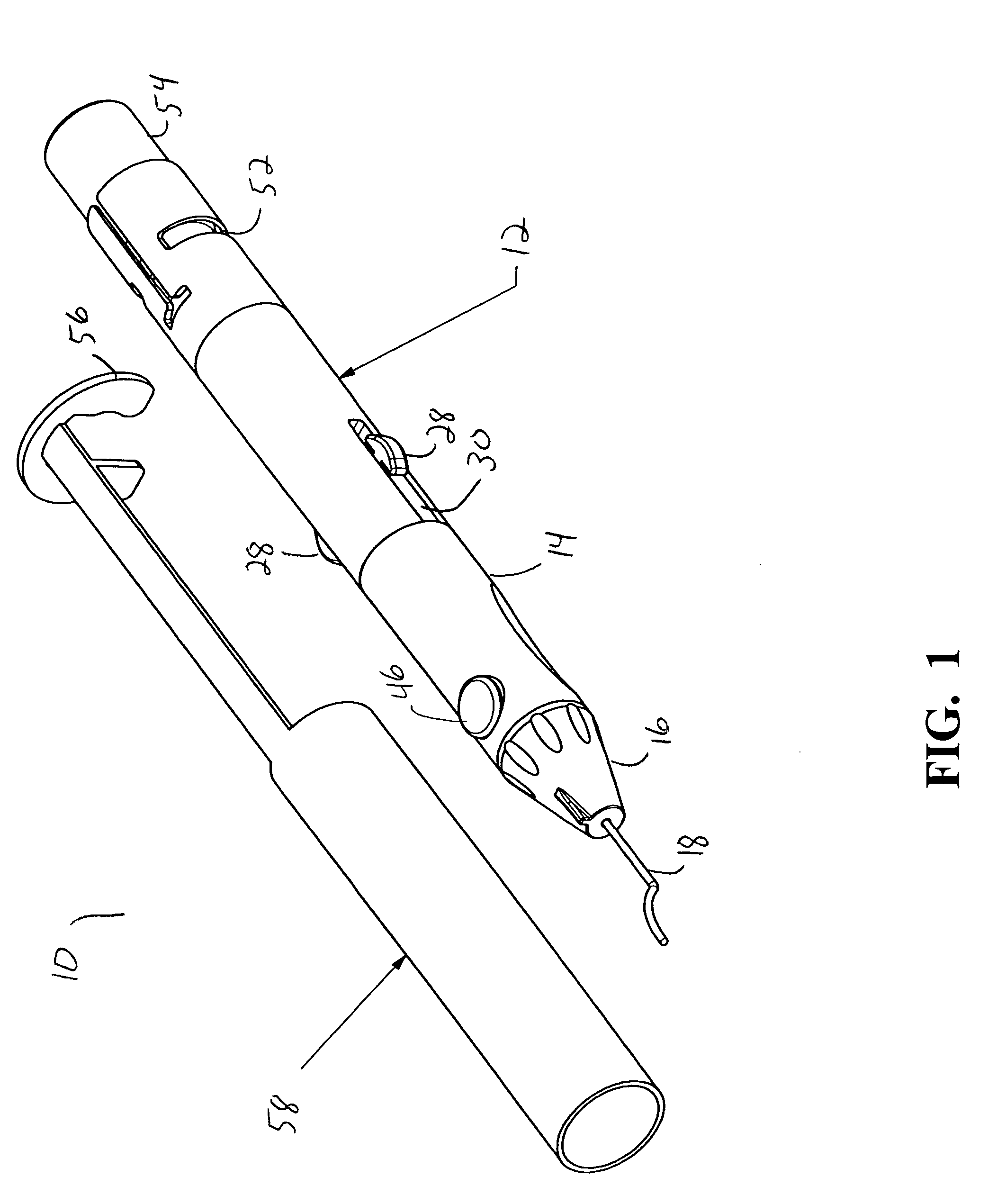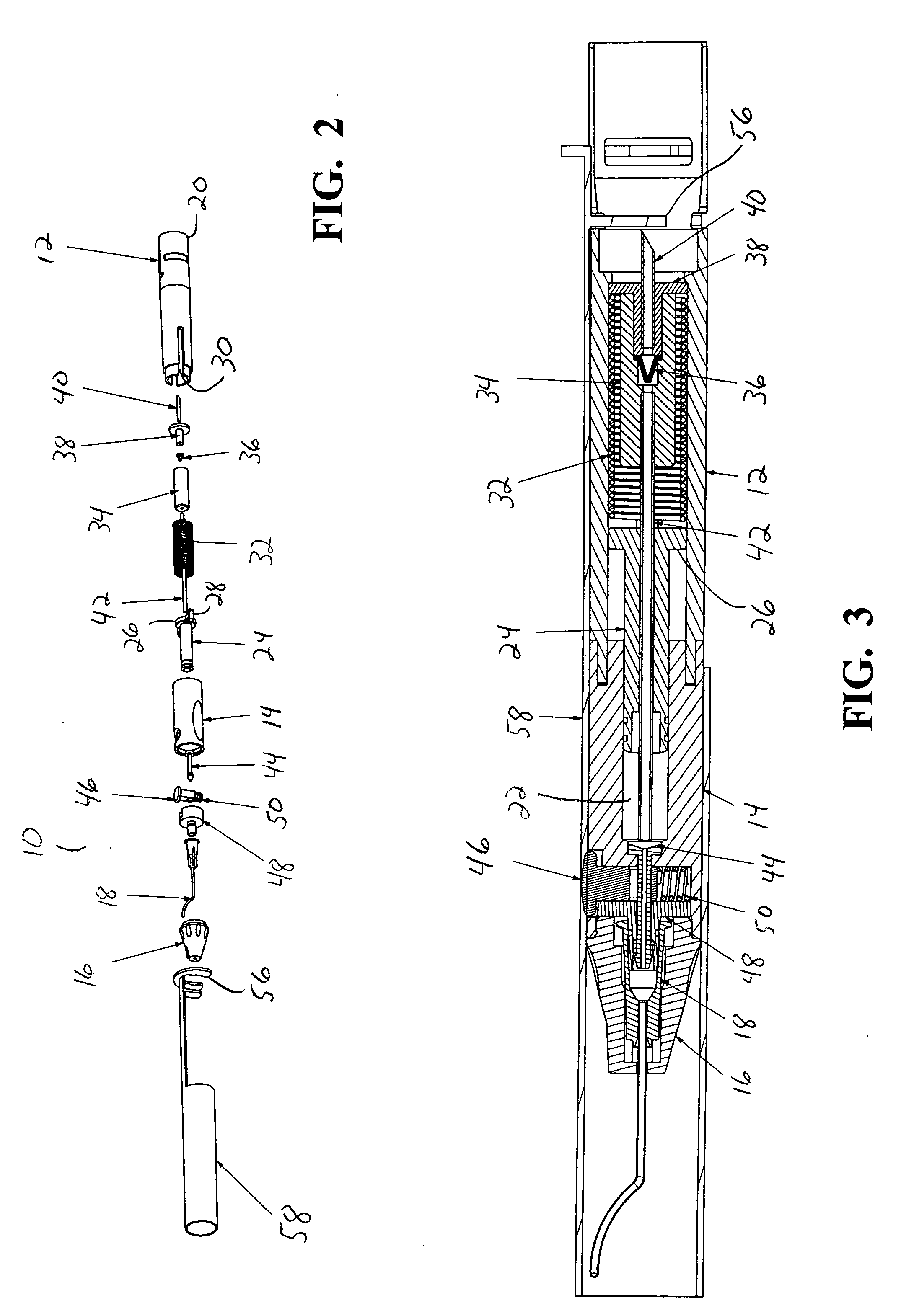Fluid delivery device
a delivery device and fluoride technology, applied in the field of fluoride delivery devices, can solve the problems of progressive damage to the retina, affecting the ability of the retina to absorb the fluid,
- Summary
- Abstract
- Description
- Claims
- Application Information
AI Technical Summary
Benefits of technology
Problems solved by technology
Method used
Image
Examples
Embodiment Construction
[0016] As best seen in FIGS. 1-3, drug delivery device 10 of the present invention generally comprises body 12, cylinder 14, nosecone or tip 16 and cannula 18. Body 12 is generally hollow and proximal end 20 of body 12 is generally open and sized to receive sealed vial 54 of a drug to be delivered. Cylinder 14 likewise is generally hollow having interior chamber 22. Nosecone or tip 16 mounts to cylinder 14 opposite body 12 and retains cannula 18. Cannula 18 may be any suitable cannula, such as the cannula described in U.S. Pat. No. 6,413,245 B1 (Yaacobi, et al.). Piston 24 is generally sized to reciprocate snugly within chamber 22, but contains flange 26 having a plurality of finger tabs 28 that is sized to reciprocate within body 12. Finger tabs 28 fit within slots 30 in body 12 and allow finger tabs 28 to be grasped when piston 24 is installed within device 10. Flange 26 allows piston 24 to engage spring 32, which is mounted inside body 12 between piston 24 and distal end 20. Pull...
PUM
 Login to View More
Login to View More Abstract
Description
Claims
Application Information
 Login to View More
Login to View More - R&D
- Intellectual Property
- Life Sciences
- Materials
- Tech Scout
- Unparalleled Data Quality
- Higher Quality Content
- 60% Fewer Hallucinations
Browse by: Latest US Patents, China's latest patents, Technical Efficacy Thesaurus, Application Domain, Technology Topic, Popular Technical Reports.
© 2025 PatSnap. All rights reserved.Legal|Privacy policy|Modern Slavery Act Transparency Statement|Sitemap|About US| Contact US: help@patsnap.com



